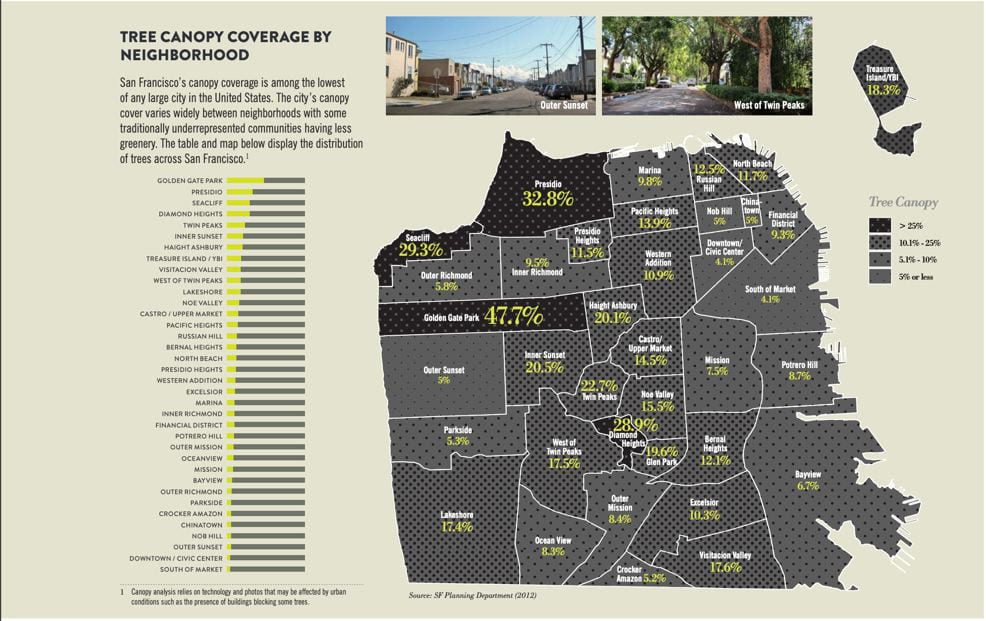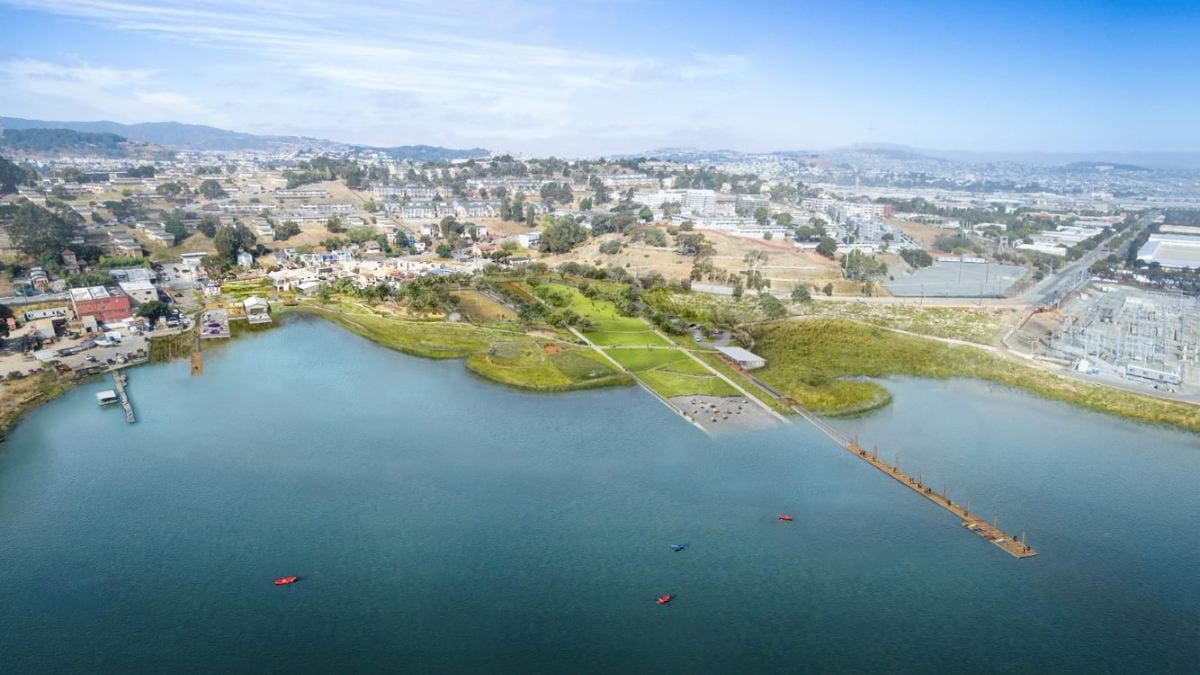A Greener Future for Everyone: Greenspace Inequality in San Francisco
In 2017, San Francisco became the first city in the US to ensure that all residents lived within a 10-minute walk of some kind of park, playground, or green space. Those of us who live near or on campus know this well– we are within this distance from Golden Gate Park, as well as smaller parks such as Rossi Park and Laurel Hill Playground, not to mention the many green spaces on our campus. With this access to parks comes many health benefits, both physical and mental. However, green space access in San Francisco is not equally distributed. We cannot talk about nature in the city (USF’s Earth Day theme for this year!) without highlighting the inequities in access to San Francisco’s green spaces and supporting local projects that aim to improve this disparity.
Research has shown that access to green space has many positive impacts on health and wellbeing, and that this applies to both larger parks (such as Golden Gate Park) and smaller parks (such as Alamo Square Park). In terms of mental health, spending time in a green space is associated with increased brain activity that mimics meditation, leading to improved general mood and attitude. Time spent in nature is also an incredibly fast and effective stress reducer and has been shown to increase creativity, productivity, and concentration. Access to green spaces has also been shown to lead to better physical health, including faster recovery from diseases and injuries. Green spaces also cool and cleanse the air, making them vital in reducing the effects of climate change. Additionally, having access to public green space makes a community more connected and cohesive.
These benefits demonstrate the importance of equal access to green space for all communities. Although San Francisco has consistently ranked number one for park access in the country, it ranks much lower when considering the inequity of this access. Research shows that San Francisco’s poor and minority populations have access to less green space than its wealthy and white populations. Residents in neighborhoods of color have access to 35% less park space per person than the city’s average neighborhood, and 56% less than those living in predominately white neighborhoods. People living in low-income neighborhoods have access to 38% less park space per person than the average neighborhood and 55% less than those in high-income neighborhoods.
The same patterns can be seen when examining the urban forest cover in San Francisco. The neighborhoods with the least percentage of tree cover are South of Market and Downtown/Civic Center, both neighborhoods with high rates of poverty and high populations of racial minorities. On the other side, the Seacliff neighborhood has the highest percentage of tree cover for any neighborhood that isn’t a park while also being one of San Francisco’s wealthiest neighborhoods.

Photo: https://default.sfplanning.org/plans-and-programs/planning-for-the-city/urban-forest-plan/Urban_Forest_Plan_Final-092314WEB.pdf
There are many efforts, both grassroots and by the local government, to build more green space in low-income communities and communities of color in San Francisco. The San Francisco Recreation and Parks Department has acknowledged its shortcomings in terms of equitable park access and reported that 80% of its capital dollars in 2020 went to projects in disadvantaged communities. One of these projects, set to be completed in 2026, is the India Basin Waterfront Park in the Bayview neighborhood. The Bayview neighborhood is an epicenter for the rich culture and history of the Black community in San Francisco, as many African Americans moved there during the Great Migration to work in the shipyards. When the naval shipyard closed in 1991, it resulted in joblessness and high poverty levels in the area. The project, in addition to building a 10-acre park with access to shoreline trials, aims to promote equitable development by emphasizing local art and culture, community resources, and easy access to public transportation, providing jobs to the local community, and protecting the shoreline against rising sea levels.

Photo: https://bucketlisters.com/inspiration/a-brand-new-park-is-coming-to-san-franciscos-india-basin-waterfront
Another project with a goal of increased access to green space in underserved communities is activist group Mission Greenway’s work to turn Parcel 36 into a community garden. Parcel 36 is an abandoned piece of land in the Mission district that formerly belonged to the Southern Pacific Railway. Now, the ownership is unclear, as the most recent tax documents were sent to people who passed away many years ago. However, Mission Greenway was met with significant pushback from private businesses in the area, exemplifying the struggles of establishing public greenspace projects. They are engaged in ongoing legal proceedings but continue to host events and maintain the garden in the greenway. You can sign their petition and support them here: missiongreenway.org/petition-time
Another project aiming to better utilize public green space is the Shared Schoolyard Program, in which the city partners with local schools to make playgrounds accessible after school hours. This program has been going since 2007 and now includes almost 40 schoolyards that are accessible to the public, providing outdoor spaces for families and community members. This program plans to broaden its reach in the future after having to halt expansion during the pandemic.
Although San Francisco has a long way to go towards green space equality, there are many efforts from both the local government and community members to improve access to public green space. These projects are vital to equitable and sustainable urban development.


